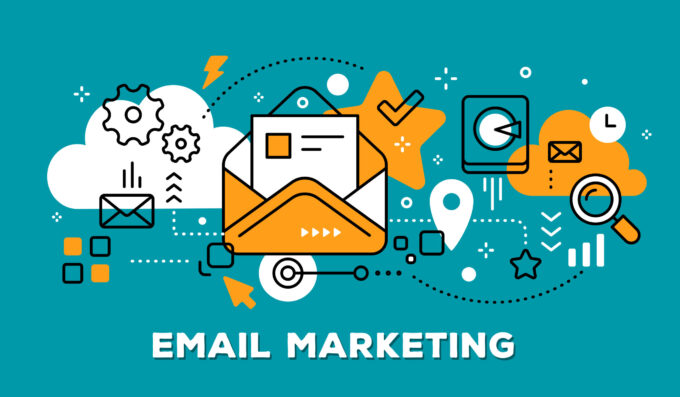The buzz surrounding the world of artificial intelligence (AI) can make it sound like it’s the panacea to common problems businesses struggle with today. For online retail companies, in particular, AI tools promise to introduce new efficiencies in customer service, digital marketing, and sales/conversions.
This optimism is driving the AI industry to new heights. IDC predicts that the global AI software market, including AI chatbots and CRM and ERP software, among others, will grow to over $500 billion by 2025 at a CAGR of 17.5%.
If you are an eCommerce store owner, you’re probably interested in using AI tools to increase conversions and boost customer loyalty. Here’s a quick look at some of the most accessible and promising AI tools to consider.
1. Chatbots

Today’s advanced chatbots are smarter than ever and no longer depend on rudimentary rule-based programming to answer (often inaccurately) simple questions. Modern chatbots now use a combination of AI, machine learning, and natural language processing to simulate written or spoken human conversation.
This makes them the perfect solution for automating answers to repetitive and time-sapping queries such as:
- Is [ITEM] in stock?
- Where is my order? When is it arriving?
- Can I request a tracking number for my order?
- Do you ship to [LOCATION]?
- How much is shipping to [LOCATION]?
- My order is defective; how do I return it?
- What is your warranty policy?
- How do I report feedback and complaints?
In other words, chatbots free your live agents from responding to these routine queries, allowing them to focus on conversations that need a human touch.
And because they depend on automation, chatbots can respond to and engage customers around the clock. With 74% of UK consumers agreeing that it’s frustrating when a brand’s customer service is available only during business hours, chatbots can immediately open your eCommerce site to queries around the clock.
Chatbots can also “learn” from every conversation they handle; the more queries they process, the better they understand the context of questions and provide more accurate and relevant answers.
2. Email Marketing Platforms

Email continues to be a valuable platform for retailers. According to Litmus, every $1 spent on email marketing generates $42 in revenue — an ROI (Return on Investment) of 4,200%. However, successful email marketing campaigns are driven by personalization; 72% of consumers say they only engage with personalized messages.
The challenge for eCommerce brands is to figure out how to personalize their emails at scale. This is where AI and automation come in.
Email marketing platforms use AI to optimize manual processes and allow marketers to implement campaign tasks faster and more efficiently. For example, Mailchimp offers an AI-driven Creative Assistant tool to automatically generate beautiful multichannel designs that use your brand’s assets and guidelines.
3. Inventory Management Software

In retail, forecasting is the process of analyzing historical sales data to predict future sales performance. It typically involves identifying patterns and trends to plot future actions, such as increasing inventory levels during specific times of the year to take advantage of peak shopping activity. According to the Aberdeen Group, organizations with accurate sales forecasts are 10% more likely to increase their year-over-year revenue and 7.3% more likely to hit their quota targets.
Traditionally, forecasting retail sales has been done by poring over volumes of past sales data. But today’s inventory management platforms now use AI to analyze historical and real-time data (such as point-of-sale data) to create models that predict seasonality and customer behaviors more accurately than ever.
4. Product Recommendation Software

Product recommendation tools are ideal for increasing your store’s conversion rate and average order value. They are so effective that, according to a McKinsey report, 35% of Amazon’s revenue is generated by its product recommendation engine.
Product recommendation platforms are designed to understand your customers’ shopping behaviors and, using that data, recommend products and services they are most likely interested in. This creates a more personalized shopping experience, which, in turn, encourages customers to shop more.
Product recommendation systems aren’t new, but today’s platforms use AI to analyze real-time data and visitor behaviors. This allows your site’s recommendations to:
- Appear faster on your homepage, product pages and checkout page
- Target site visitors with smarter audience segmentation
- Give customers more control over their recommendations by filtering out products they don’t want to see, which the recommendation system remembers.
5. Buyer’s Journey Mapping Software

Buyer’s journey mapping tools help eCommerce store owners increase their revenues by identifying lost sales opportunities throughout the typical buyer’s path to purchase — and even post-purchase.
These platforms use AI to collect behavioral data points on your website and app for analysis and interpretation. This information can then be visualized in a roadmap, allowing retail business owners to understand how shoppers go from visiting your website (and from where) to reaching the checkout page.
More importantly, buyer’s journey tools allow you to identify customer objections and roadblocks, which you can then address through actions such as:
- Improving your website/app
- Making your site faster
- Resolving frequent stockout issues
- Adding more payment options
- Adding product images/videos.
Some buyer’s journey tools will also provide recommendations based on your customers’ behaviors. These suggestions can range from personalized promotions and coupon codes to product recommendations, to name a few.
Over to You
As businesses around the world recover from the impact of the COVID-19 pandemic, it’s clear that businesses that are further along in their use of AI tools have managed to do a better job of weathering the pandemic-related disruptions. Customer experience features powered by AI, such as self-serve and process automation, are no longer just about customer experience. Today, they’re a necessity to protect your operations from disruptive events and ensure service continuity.
However, there is no one-size-fits-all approach to choosing AI-powered tools for your business. Take the time to assess your needs, your budget and your customers purchasing habits to determine which tools, if any, will drive real value in your business. As with any other major business decision: do your homework.
Get in touch with Futr to learn more about using AI-powered chatbots to transform your customer service capabilities at scale.









